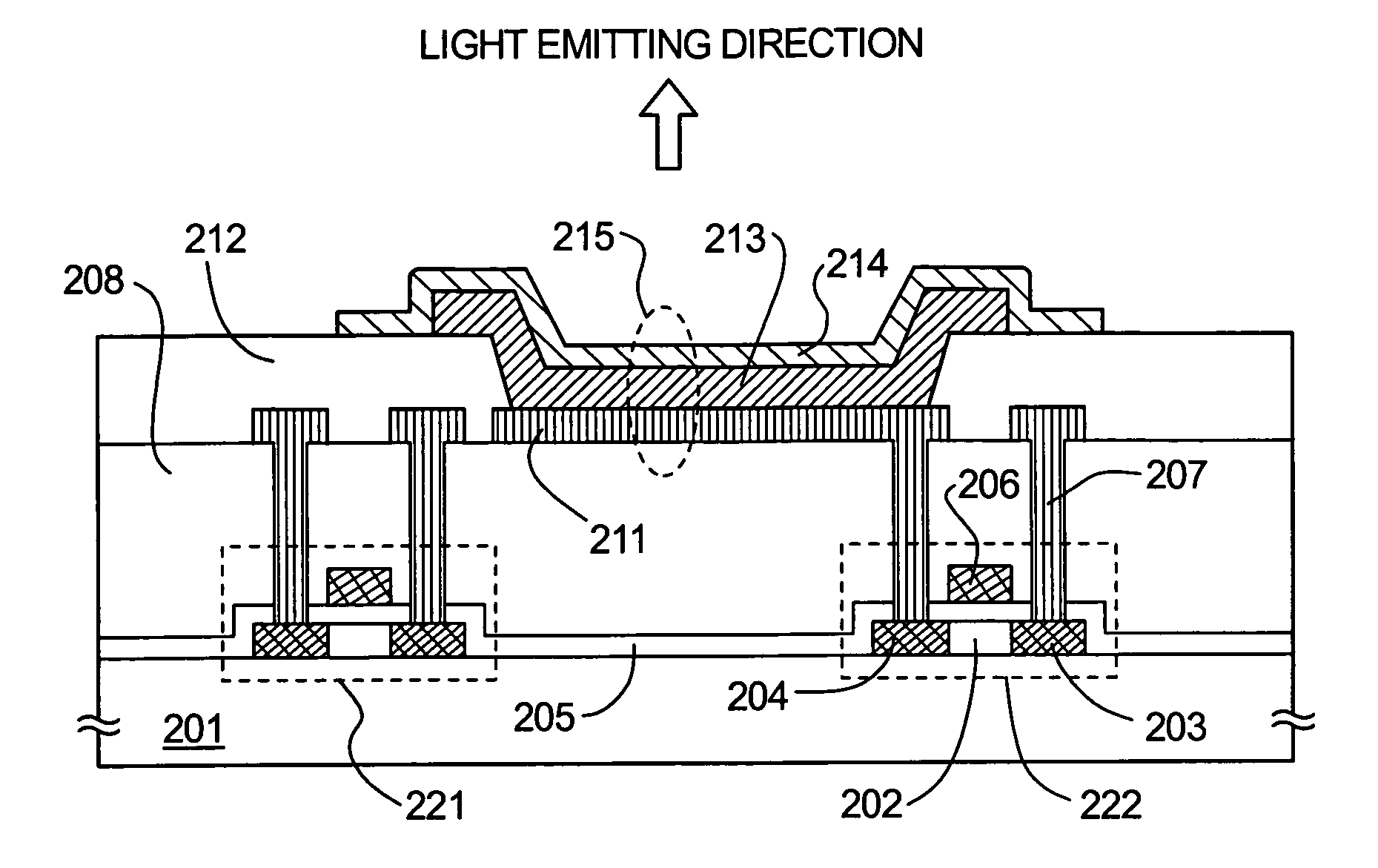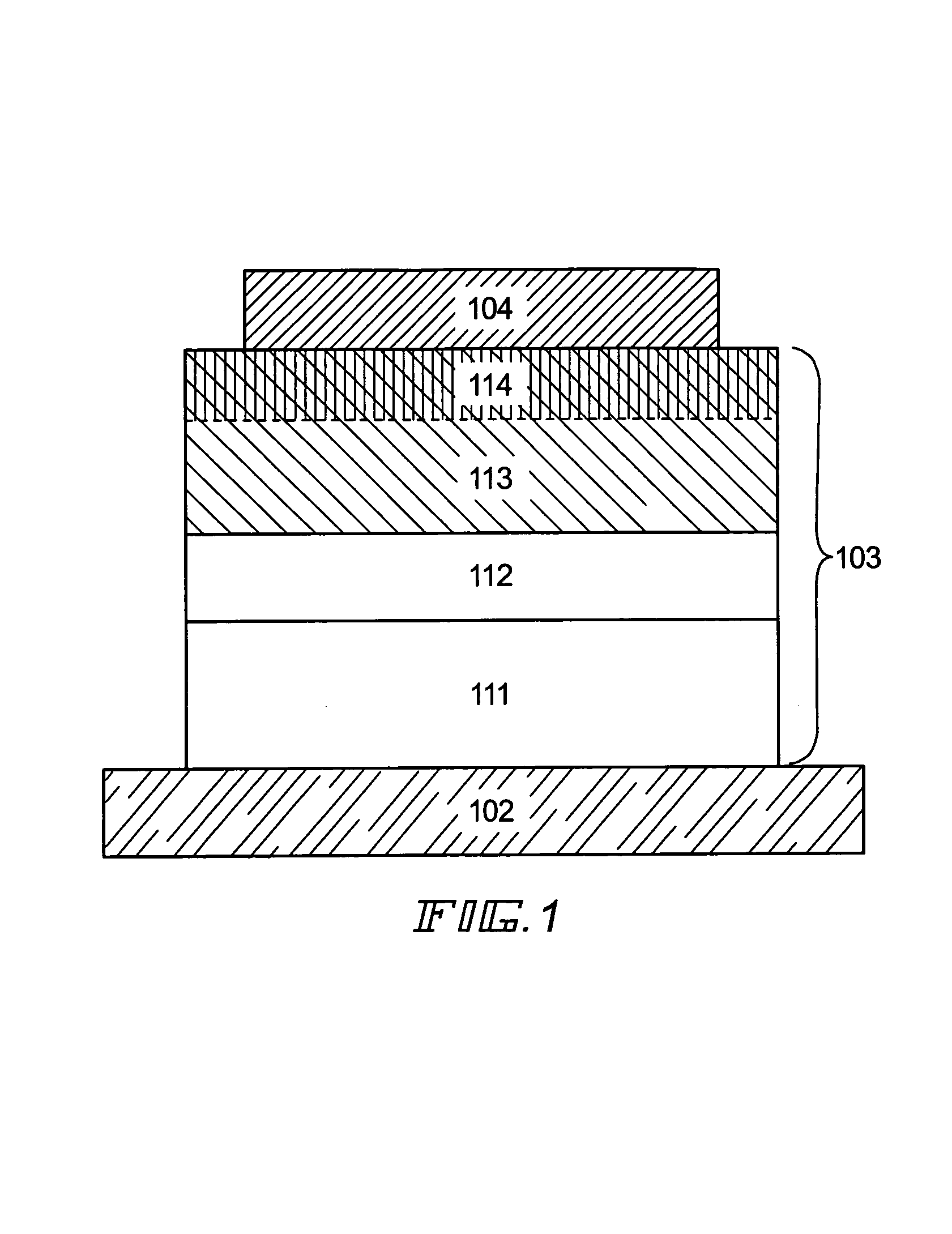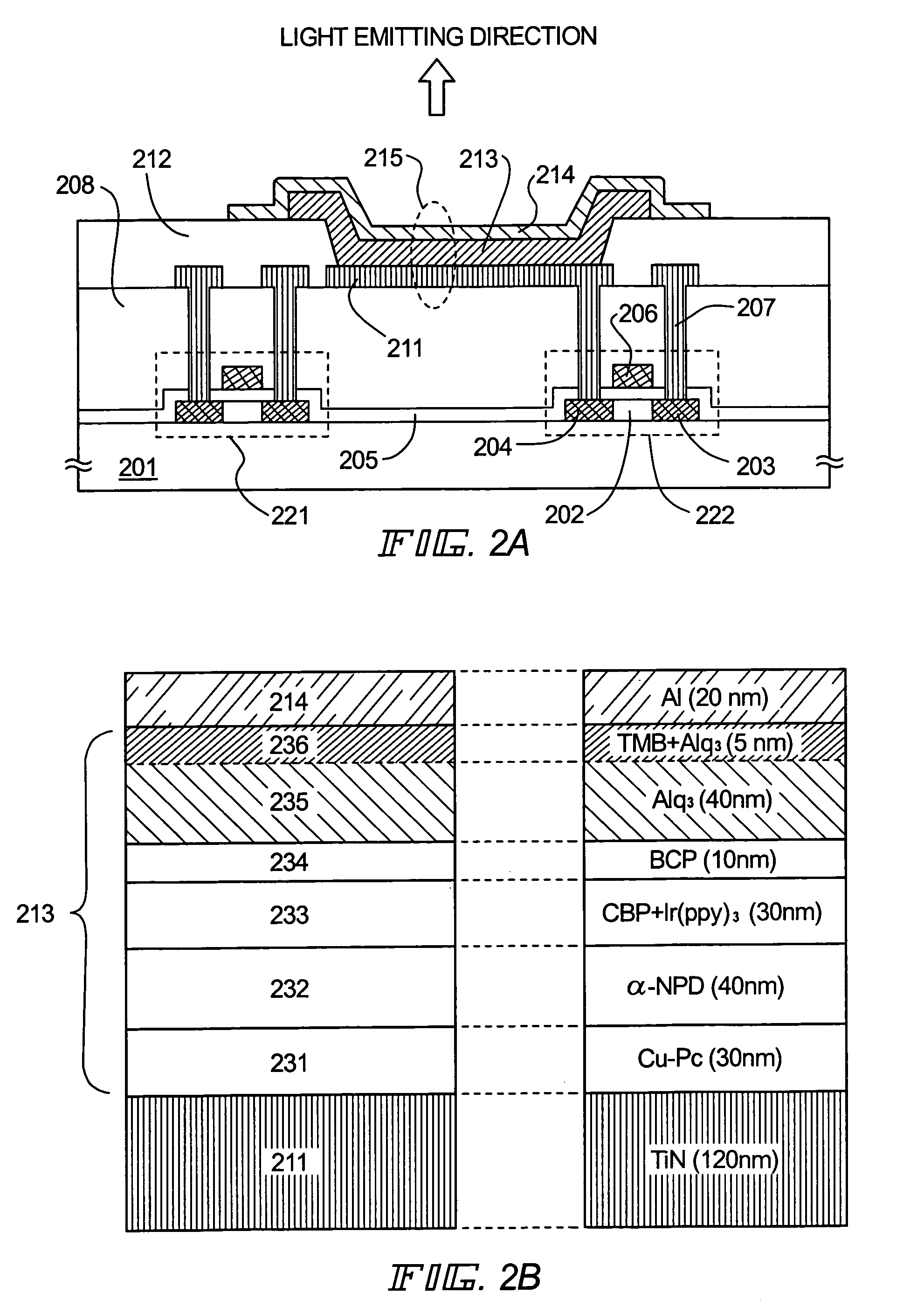Light emitting device
a light-emitting device and light-emitting technology, which is applied in the direction of thermoelectric devices, organic semiconductor devices, solid-state devices, etc., can solve the problems of poor adhesion to the organic surface, inability to oxidize, and poor stability of tft, so as to improve the carrier injection
- Summary
- Abstract
- Description
- Claims
- Application Information
AI Technical Summary
Benefits of technology
Problems solved by technology
Method used
Image
Examples
embodiment mode 1
[Embodiment Mode 1]
[0050]The element structure of a light emitting device of the present invention is explained using FIG. 1.
[0051]An organic compound layer 103 is formed on an anode 102 in FIG. 1, and a cathode 104 is formed on the organic compound layer 103. Note that holes are injected to the organic compound layer 103 from the anode 102, and electrons are injected to the organic compound layer 103 form the cathode 104. The holes and the electrons recombine in the organic compound layer 103, and thus luminescence is obtained.
[0052]Further, the organic compound layer 103 contains at least a hole transporting layer 111, a light emitting layer 112, an electron transporting layer 113, and an electron transmitting region 114 formed in a portion of the electron transporting layer, and is formed from one layer or a plurality of layers that are laminated, having different functions with respect to carriers, such as a hole injecting layer, a hole transporting layer, or a blocking layer. N...
embodiment mode 2
[Embodiment Mode 2]
[0082]The element structure of a light emitting element in a light emitting device formed in accordance with the present invention is explained using FIGS. 2A and 2B. Note that FIG. 2A is a diagram showing the cross sectional structure of a pixel portion of a light emitting device, and FIG. 2B is a diagram showing the element structure of a light emitting element. Specifically, an upward-emission type element structure is explained for a case in which one electrode is electrically connected to an electric current control TFT, and another electrode, formed sandwiching an organic compound layer therebetween, is a cathode made from a material through which light passes.
[0083]Thin film transistors (TFTs) are formed on a substrate 201 in FIG. 2A. Note that an electric control TFT which is electrically connected to a first electrode 210 of a light emitting element 215, and which functions to control electric current supplied to the light emitting element 215, and a swit...
embodiment mode 3
[Embodiment Mode 3]
[0112]A light emitting device in which the element structure of a light emitting element differs from that of the light emitting device described in Embodiment Mode 2 is explained in Embodiment Mode 3 using FIGS. 4A and 4B. FIG. 4A is a diagram showing the cross sectional structure of a pixel portion of the light emitting device, and FIG. 4B is a diagram showing the element structure of the light emitting element. Specifically, an upward-emission type element structure is explained for a case in which one electrode is electrically connected to an electric current control TFT, and another electrode, formed sandwiching an organic compound layer therebetween, is an anode made from a material through which light passes.
[0113]Note that the light emitting device in Embodiment Mode 3 has an electric current control TFT 422 and a switching TFT 421 on a substrate 401, similar to that of Embodiment Mode 2, and it is preferable that the electric current control TFT 422 be fo...
PUM
| Property | Measurement | Unit |
|---|---|---|
| thickness | aaaaa | aaaaa |
| thickness | aaaaa | aaaaa |
| thickness | aaaaa | aaaaa |
Abstract
Description
Claims
Application Information
 Login to View More
Login to View More - R&D
- Intellectual Property
- Life Sciences
- Materials
- Tech Scout
- Unparalleled Data Quality
- Higher Quality Content
- 60% Fewer Hallucinations
Browse by: Latest US Patents, China's latest patents, Technical Efficacy Thesaurus, Application Domain, Technology Topic, Popular Technical Reports.
© 2025 PatSnap. All rights reserved.Legal|Privacy policy|Modern Slavery Act Transparency Statement|Sitemap|About US| Contact US: help@patsnap.com



